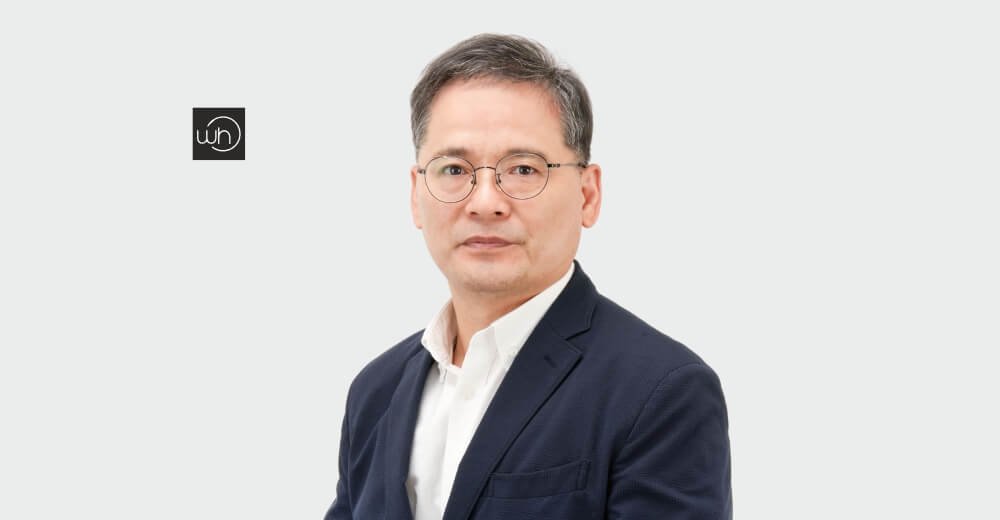When hospitals talk about digital transformation, it often sounds like a distant goal. For Jong-Soo Choi, Chief Technology Officer at Samsung Medical Center, it’s part of daily life. He has spent his career turning technology into something practical—something that makes care faster, safer, and more human.
Jong-Soo Choi doesn’t follow trends. He listens to what doctors and nurses really need, then builds tools that solve real problems. From mobile check-ins that reduce wait times, to bedside QR codes that give instant access to patient info, to AI tools that help nurses, even not experts on bedsore, treat wounds—his focus is always the same: improve care and lighten the load on staff.
At Samsung Medical Center—now one of the world’s most advanced smart hospitals—Jong-Soo Choi has led a quiet, steady transformation. Behind the scenes, he has shaped systems that are reliable, secure, and deeply connected to how care actually happens. Every tool is tested not just for performance, but for how well it fits into the daily work of a hospital.
What sets him apart isn’t just the scale of innovation—it’s his purpose. He believes technology should support, not replace, the people who care for patients. His leadership has helped create a system where data runs in the background, and people stay at the center.
This people-first mindset was recognized on the global stage when Jong-Soo Choi was named a Change Maker in the Global Patient Innovator category at the 2025 HIMSS Global Conference—honoring his lasting impact on healthcare through thoughtful, human-focused innovation.
Let’s take a closer look at how Choi’s hands-on approach has helped Samsung Medical Center become a model for digital healthcare—and what it means for the future of hospitals everywhere!
A Lifelong Devotion to Digital Healthcare
Choi’s journey in healthcare technology spans more than 30 years—marked by innovation, persistence, and a clear focus on patient-centered care. “I’m incredibly grateful to have spent over 30 years dedicated to healthcare digital transformation, and it’s something I’m truly happy about,” he says. His work started in the late 1990s, at the dawn of the internet age, when he personally developed ways for patients to book appointments online and for referring doctors to access medical records remotely—something groundbreaking at the time.
In the early 2000s, as mobile phones became more common, Jong-Soo Choi saw new opportunities. He introduced systems letting patients check test results and pay bills via their phones—changes that cut down waiting times and made healthcare more convenient.
By 2010, his focus shifted to bringing different types of data together. He helped link clinical, genomic, and lifestyle information to support research based on analytics. “I’m deeply grateful to have built my career alongside rapid technological progress in healthcare,” he reflects. Every step showed his steady commitment to improving how care is delivered—quietly shaping a future where healthcare and technology move together.
The CTO’s Role in Modern Healthcare
At Samsung Medical Center, Jong-Soo Choi leads with care and precision, balancing cutting-edge tech with the day-to-day realities of running a busy hospital. As CTO, his top priority is making sure every digital system runs smoothly, every hour of the day. “My primary responsibility is keeping IT systems stable because every part of hospital operations depends on them,” he explains, pointing out how vital uninterrupted service is.
But his role goes far beyond just keeping systems up and running. He drives the hospital’s digital transformation by integrating practical tech solutions into clinical routines—making work easier for staff and improving patient care. For example, once patients check in via mobile admission, traditional paper charts above beds are swapped for digital screens. This streamlines nurses’ workflows and helps patients understand their care more clearly.
“These digital changes are all about making life easier for healthcare professionals,” he says. Doctors can now scan bedside QR codes during rounds to access real-time patient info, speeding up decision-making right on the spot.
Jong-Soo Choi keeps developing tools that reduce paperwork and create a more responsive care environment. “My core role as CTO is to boost both operational efficiency and satisfaction for patients and staff,” he adds. For him, technology isn’t just a support tool—it’s the engine behind a smarter, smoother healthcare experience.
A Vision for Equity and Efficiency
Looking ahead, Choi’s vision is both practical and caring. “One of the biggest challenges today and in the future is the shortage of specialized healthcare workers and the uneven distribution of medical services,” he says.
He highlights two main ways to tackle this. First, expanding home-based healthcare. Inspired by programs like the U.S.’s “Home Hospital,” he imagines a future where patients receive hospital-level care at home, using remote monitoring, AI-driven health management, and wearable devices.
Reducing inpatient length of stay is a proven “no-regrets” strategy recognized by healthcare leaders, including Vizient, for its ability to drive both cost savings and capacity gains. According to a report by healthcare consultancy Kaufman Hall, lowering the average length of stay by just one day in a 425-bed hospital in the US—from six to five days—could save $20 million annually in operating expenses and generate an additional $20 million in margin by enabling the hospital to admit more patients, assuming a $4,500 margin per admission.
Second, he supports scaling up centralized resource-sharing systems. Imagine rural clinics handling local care while urban specialists provide real-time support through AI-powered teleconsultations. But Jong-Soo Choi stresses that success depends not only on technology but also on reorganizing medical resources and setting legal standards—so everyone can get fair care, no matter where they live.
Key Projects at Samsung Medical Center
Since joining Samsung Medical Center, Jong-Soo Choi has led many projects, big and small, but two next-gen initiatives stand out. The crown jewel is the hospital’s latest Healthcare Information System (HIS) called DARWIN—Data Analytics and Research Windows for Integrated kNowledge.
DARWIN has set new global standards. Under his leadership, Samsung Medical Center became the first hospital worldwide to reach Stage 7—the highest maturity level—in all four HIMSS domains: infrastructure, electronic medical records, digital imaging, and analytics. Beyond that, the hospital earned a perfect score on the Digital Health Indicator, which measures digital transformation across governance, workforce, interoperability, person-centered health, and predictive analytics.
People often ask what these honors really mean in practice. He explains that while awards matter, the true success is in better clinical outcomes. Over the last decade, outpatient visits increased nearly 30% without adding more staff. At the same time, bed occupancy stayed steady at 90%, while the average patient stay dropped from 7.3 days to 5.4. “What I’m most proud of are these real improvements that benefit patients and staff,” he says.
AI Transforming Healthcare Delivery at Samsung Medical Center
Artificial intelligence is becoming a key part of care at Samsung Medical Center, with tools that directly help medical staff in their daily work. One standout is an AI tool that helps nurses assess pressure injuries just by taking a photo. This has made nursing much more efficient, especially for newer staff who often struggle to accurately judge wound stages and pick the right dressings.
Built on deep convolutional neural networks, the AI analyzes photos taken by smartphones or barcode scanners and recommends dressing materials for each injury stage. Nurses don’t need expensive cameras or special gear to use it. The co-developed AI-based pressure ulcer management app ‘Skinex’ with “Fine Healthcare” analyzes images of patients’ pressure ulcer areas and recommends dressing materials according to each stage, and recently has obtained medical device approval from the Korean Ministry of Food and Drug Safety. This solution supports clinical accuracy and standardization of nursing care based on over 9,000 photos and expert labeling.
Pressure injuries are a serious risk for patients who lie still for long periods, especially those with weak immunity due to bed rest. Managing these wounds is tough, particularly for less experienced nurses. This AI tool offers precise, ongoing monitoring from admission to discharge, ensuring consistent care no matter who’s on duty.
He says, “Even nurses new to pressure injury care were able to make better assessments and choose proper dressings, improving healing outcomes by 30 to 40%.” It lightens nurse workloads while boosting patient recovery—showing AI’s real potential to transform care.
Challenges in Driving Healthcare Innovation
For Jong-Soo Choi, healthcare innovation moves more slowly than in other fields, and that’s frustrating. “It really breaks my heart,” he admits. The biggest barrier is patient data privacy—health information is sensitive, so hospitals are cautious about adopting new AI, especially cloud-based tools. They can’t just plug in cloud solutions; they have to adapt them to meet strict security rules, which slows things down.
Money is also a factor. Because healthcare is a public service, budgets are tight and integrating advanced AI takes time. Even promising tools like cancer prediction AI face long delays before reaching patients.
He sums it up: “The more we hope for life-saving tech to reach patients fast, the harder it is to accept the reality of delays.”
The Power of Collaboration
Collaboration plays a huge role at Samsung Medical Center. Jong-Soo Choi highlights partnerships with Samsung SDS to build a cloud-based hospital system, with AWS on AI-driven research platforms, with GE Healthcare on medical imaging, and with Douzone Bizon to strengthen the healthcare ecosystem.
“These partnerships are crucial for bringing in new tech, boosting research, and delivering innovative patient care,” he says. By working together, Samsung Medical Center pushes the boundaries of healthcare innovation.
Exciting Trends and Data Security in Healthcare
Jong-Soo Choi often dreams of a future where healthcare fits seamlessly into daily life. “Sure, there are challenges—tech maturity, costs, data protection—but imagine if simply spitting into a sensor after waking up or using a smart toilet could analyze your health,” he muses. It might not happen soon, but soon our everyday routines could reveal key health insights.
He envisions a world where genetic testing, lifestyle data, and clinical records combine to spot risks early and offer personalized prevention. “Wouldn’t that be revolutionary?” he asks. He also sees treatment moving into homes, with wearable monitors and telemedicine turning living spaces into mini-clinics, making healthcare more accessible and empowering.
On data security, he stresses it’s not just about tech but also society. “We need clear agreements on who can use data and how, always with patient consent.” Overly strict bans on sharing data can stall innovation, while too little protection risks privacy.
Success means balancing strong technical safeguards like encryption with societal rules on data use. Only then can we protect privacy and unlock AI’s full potential.
Preserving the Human Touch in a Digital Age
Jong-Soo Choi stresses that while tech is crucial, keeping healthcare human is key. “Many think AI will solve everything, but we’re far from an era where AI makes life-or-death decisions alone,” he says.
Even years from now, AI will need humans to guide it. Doctors use experience and intuition to catch rare diseases or complex cases that AI might miss. They consider medical history, lifestyle, and patient wishes to make thoughtful choices—things AI can’t fully do.
Jong-Soo Choi acknowledges AI’s value in supporting roles—improving diagnostics, organizing data, streamlining workflows—but says it should stay secondary in critical care. Society must reach broad agreement before AI leads clinical decisions, which takes time because patient safety is paramount.
He believes the human touch is irreplaceable. “AI can analyze data, but interpreting it with empathy is a human job. Technology is a tool; the heart of healthcare will always be human connection.”
Fostering a Culture of Innovation
For Jong-Soo Choi, encouraging innovation at Samsung Medical Center is about inspiring people, not just tech. “Digital transformation is hard without a culture that values learning and innovation,” he explains. Luckily, since the hospital opened in 1994, innovation has been part of its DNA.
He notes that once staff see how innovation helps, they become passionate advocates. “It can’t be forced; it has to spread naturally.”
To keep the spirit alive, Jong-Soo Choi compares innovation to breathing life into a clay figure—empowering people to bring the organization to life. He encourages small, quick-win projects so many staff can take part and feel success. These wins build momentum and make innovation part of everyday work.
Advice for Aspiring Healthcare Technology Professionals
Jong-Soo Choi warns that approaching healthcare tech purely from a technical angle often fails. Nurses, for example, don’t care how advanced a robot is if it just moves supplies—they want tools that truly support patient care. “Counting or tracking supplies doesn’t help nurses build better patient relationships; it can actually frustrate them.”
What really matters is building systems that genuinely ease nurses’ work. He imagines robots that automatically deliver supplies and track usage, freeing nurses to spend more time with patients—which improves safety and satisfaction.
Sharing this vision turns nurses into digital innovation collaborators and leaders. Though there’s initial resistance, “eventually, all nurses will proudly say they were part of the project.” For him, that pride is the real success.
The DARWIN Project Journey
One of Choi’s toughest moments came during the first launch of the DARWIN hospital information system in 2015, which failed due to unresolved bugs. “We rushed ahead without fully fixing issues,” he admits, leading to a necessary rethink.
The team learned that success needed frontline healthcare workers—doctors, nurses, specialists—to lead and shape the project. They adopted a “one team” approach, pairing clinicians with developers and coordinators, and used daily scrum meetings to track progress. This user-focused approach rebuilt trust.
Their second launch in 2016 succeeded, and the philosophy that tech should be driven by its users remains central to DARWIN today. He says, “The best outcomes come from users, not just technology.”
Leading DARWIN is a proud achievement. Since then, the system earned four HIMSS Stage 7 validations and a perfect Digital Health Indicator score—among the top honors in digital health. This journey showed Jong-Soo Choi that overcoming setbacks takes honest reflection, teamwork, and putting users first.
A Vision for Global Impact
Since 1994, Samsung Medical Center has led digital transformation with initiatives like Paper-less and Wait-less care, evolving recently with “Connect & Thru” to smooth patient and provider interactions. Ranked 18th in Newsweek’s World’s Best Smart Hospitals 2025, Jong-Soo Choi hopes to reach the top 10 before retiring.
But for him, prestige comes second to equity. “We have a responsibility to help everyone get fair healthcare, no matter where they live.” With huge disparities around the world, Jong-Soo Choi wants to share Korea’s digital healthcare successes globally, spreading Samsung Medical Center’s impact far beyond its walls and helping build a smarter, fairer healthcare future everywhere.





